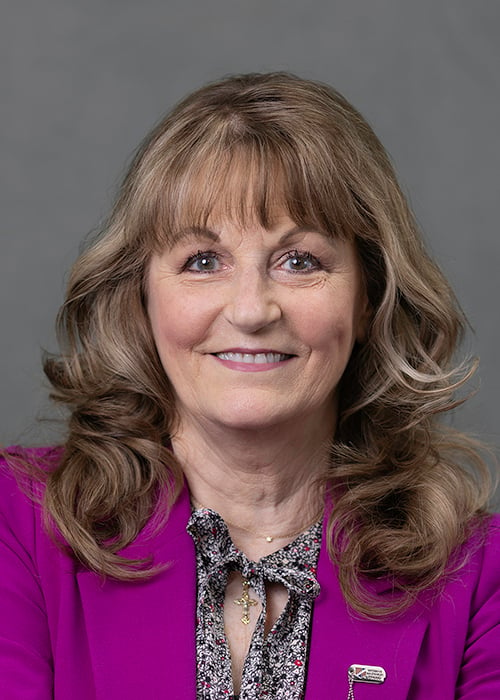There is good news in this year’s VA budget request for women and other underserved minority veteran populations.
VA Secretary Denis McDonough and the administration clearly want to convey a very strong message of support to women, one of the fastest-growing segments of the veteran population. However, VA’s message is even broader: The department wants all veterans to feel welcomed and included when they walk through department doors. These goals align with MOAA’s push to eliminate health disparities for women and minority veterans – a top legislative priority for MOAA in the 117th Congress.
The $117.2 billion discretionary portion of the larger $269.9 billion VA budget proposal, according to the VA, would:
- Work to eliminate veteran homelessness and prevent veteran suicide.
- Help veterans build civilian lives of opportunity with the education and jobs worthy of their skills and talents.
- Ensure the VA welcomes all veterans, and diversity, equity, and inclusion are woven into the fabric of the department.
- Keep faith with families and caregivers.
There are almost 2 million women veterans today, making women a significant minority among the 18 million veterans living in the U.S. While the overall veteran population has been declining in recent years, the number of women veterans is expected to spike to about 17% of the veteran population by 2040, according to the U.S. Census Bureau.
[RELATED: A Battle Is Brewing Over the Rising Costs of VA Health Care]
Women transitioning out of uniform face unique challenges because of their experiences in service. A large percentage of women veterans, over 12%, have served in various operations since Sept. 11, 2001.
They are also the most frequent users of health care in the department, according to the VA. The department expects women health care enrollees to grow from the current 10% to as high as 19% by 2025. In addition, the median age for women veterans is 51, compared with 65 years for male veterans who use VA health care services.
Women veterans experience cardiovascular issues, mental health concerns, and chronic pain among other significant health conditions. Women patients report hypertension, lipid disorders, depression, joint and spine disorders, and eye and skin disorders among their top health issues attributed to service.
Military sexual trauma (MST), unemployment, poverty, and homeless rates are also higher among women veterans than their male counterparts.
The demand for VA health care services has more than tripled since 2001 among women veterans. To meet the demand, VA is proposing increasing funding for gender-specific care by 12%, and all women’s health care to a total of $8.4 billion in FY 2022, up from $7.8 billion in 2021.
The additional funding will target improving services and increasing women’s access to health care by hiring more primary care providers, gynecologists, mental health care providers, and care coordinators. Funding also targets improving medical facility infrastructure, equipment, women’s and prosthetic research, and organizational and cultural improvements.
New Office of Resolution Management, Diversity, and Inclusion
“The department is making a strong commitment to ensuring VA welcomes all our Veterans, to include women, those of color and whom are LGBTQ+,” McDonough said in a VA statement. “To support that commitment, VA has created a new Office of Resolution Management, Diversity and Inclusion which will benefit from an increase of $12.9 million to strengthen VA’s diversity program.”
The new office was created by consolidating two offices — the Office of Diversity and Inclusion, and the Office of Resolution Management. The additional $13 million plus-up for office operations includes the addition of 74 employees to strengthen VA’s diversity programs, prevent and resolve discrimination cases early in the process, and provide access to robust harassment prevention program and counseling services.
Strategic goals for the office include:
- A diverse, high-performing workforce reflecting all segments of our society and valuing all aspects of our human diversity.
- An inclusive and engaged organization leveraging diversity and empowering all contributors.
- Outstanding and responsive public service through principled leadership, shared accountability, and educated stakeholders.
The additional resources to support the office’s mission also ensure VA’s compliance with provisions in the Deborah Sampson Act mandating the department to address harassment, sexual assault, and MST. It also complies with several other presidential executive orders and directives advancing racial equity and support for underserved communities throughout the federal government.
MOAA and the Way Forward
The pandemic has placed a spotlight on the barriers and disparities facing women and minority veterans when seeking access to VA health care and services. MOAA believes accelerating initiatives for the VA to fully embrace a culture of equity, diversity, and inclusion with respect to all veterans, including women and minority veterans, is more important than ever.
When the VA ensures veterans have equitable access to timely, compassionate, and high-quality health care, the department assures all veterans they are valued, respected, and recognized for their service and contributions.
MOAA is grateful VA’s FY 2022 budget request is a significant step in meeting our legislative priority and sends a strong message to women, minority, and underserved veterans that the VA cares about them and their well-being.

